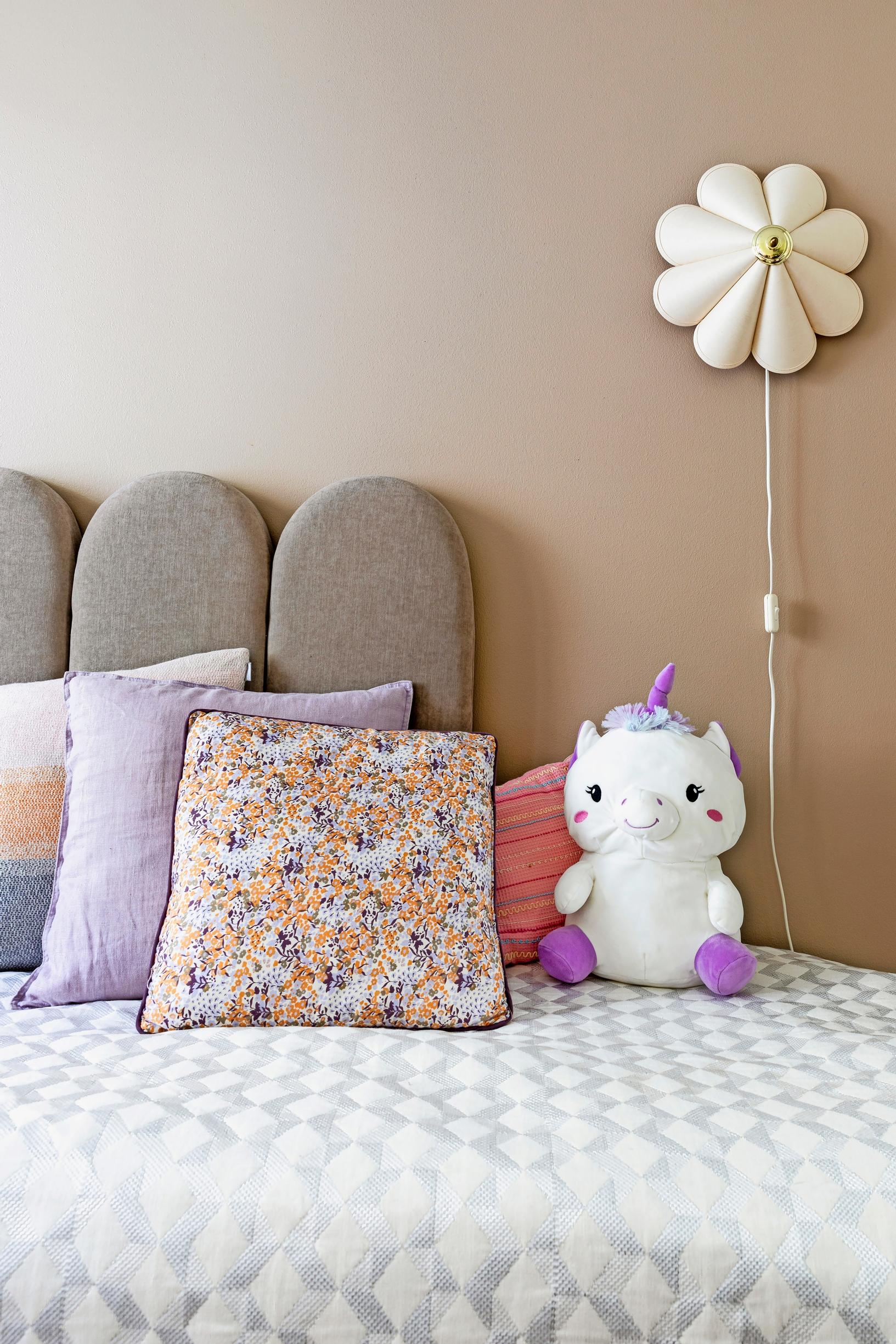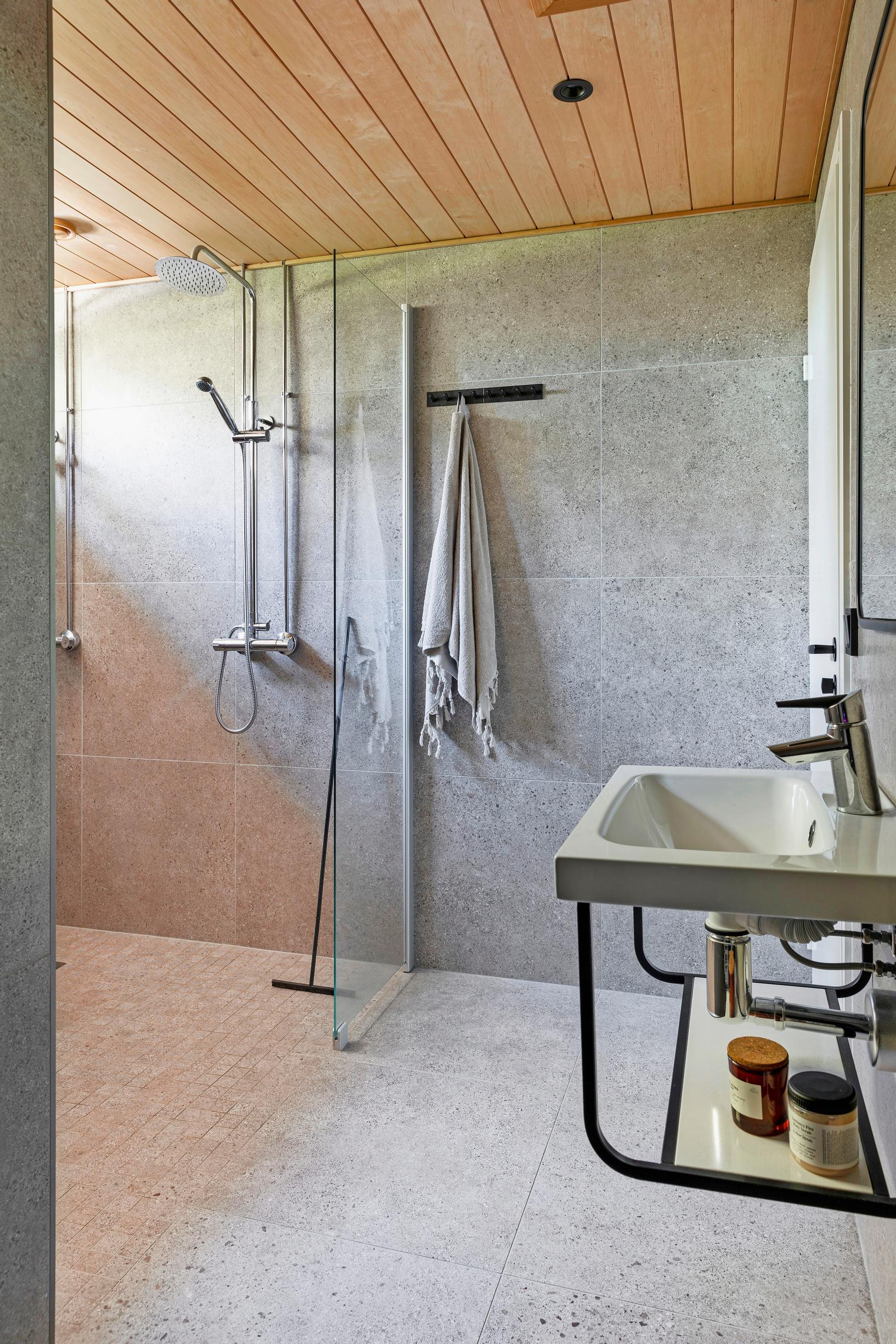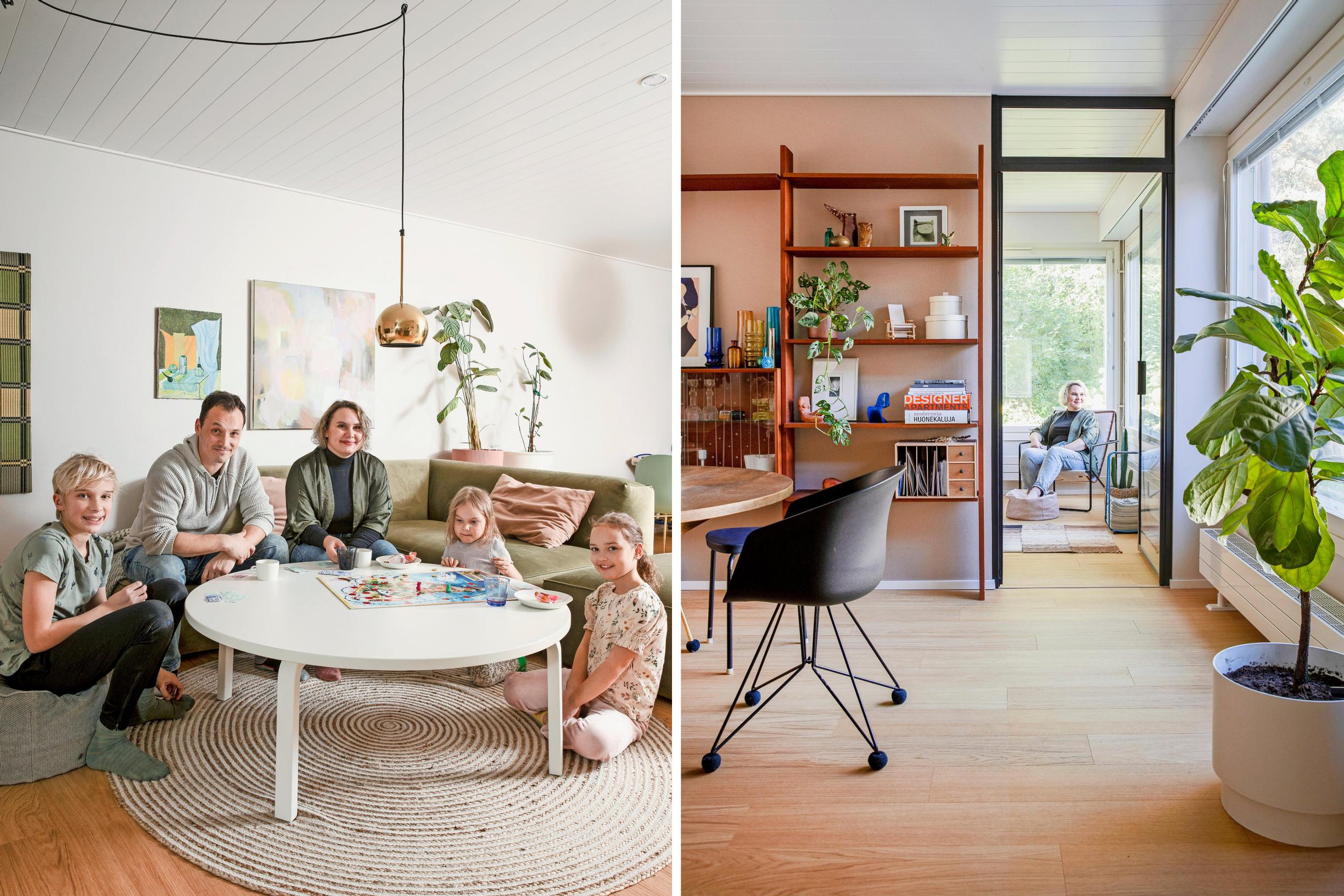
The illness of their youngest forced this blended family to find a new home: “An accessible home doesn’t have to feel institutional”
In Maiju and Sami’s blended family home, moving around in a wheelchair is easy. “It felt as if the 1960s apartment had been renovated just for us.”
Living here: Interior architect Maiju Koskinen and Sami Lindberg along with Alvar, Valma and Viola.
Our home: A row house apartment built in 1968 in Tampere, Finland, with 5 rooms + kitchen + bathroom and sauna, 120m².
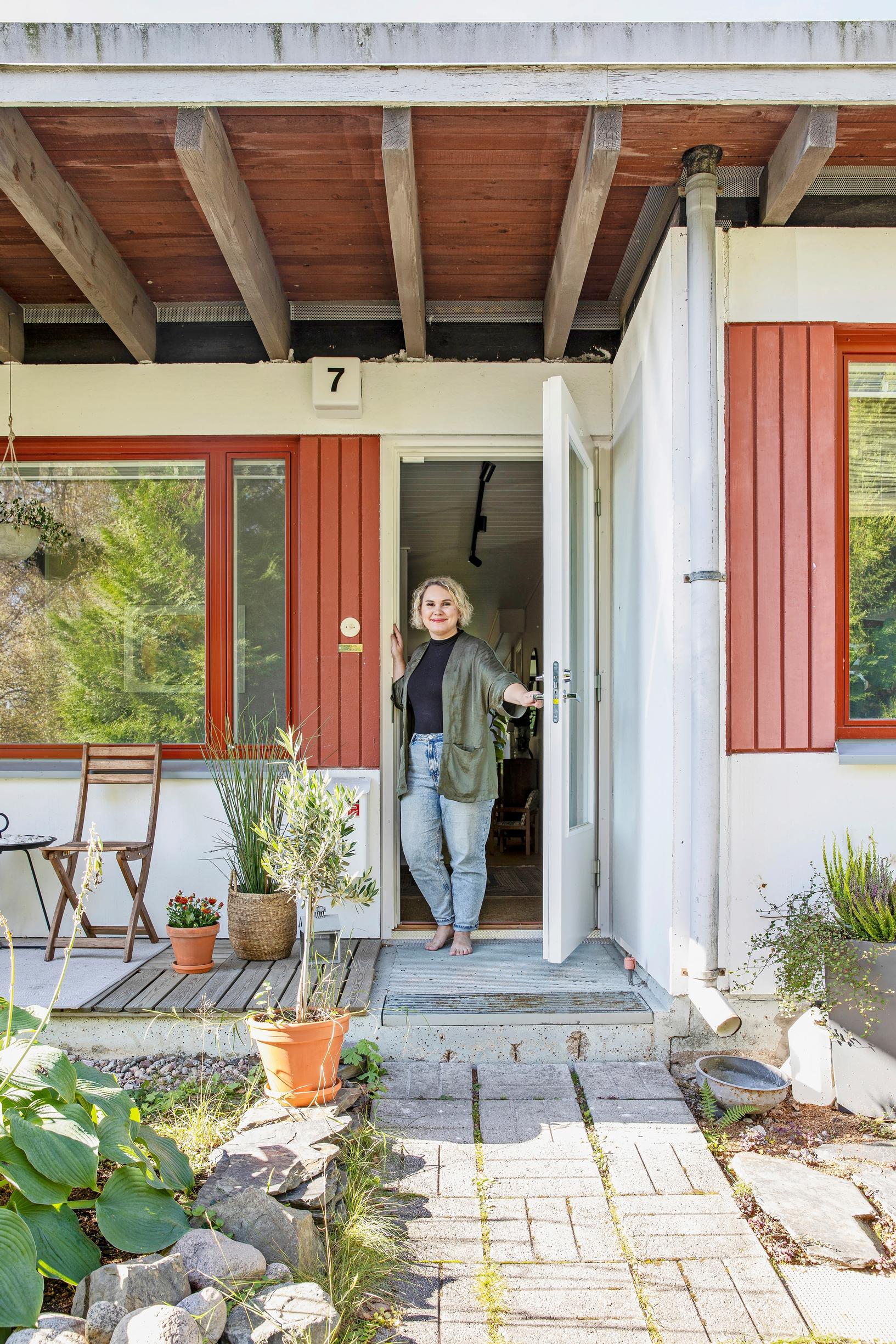
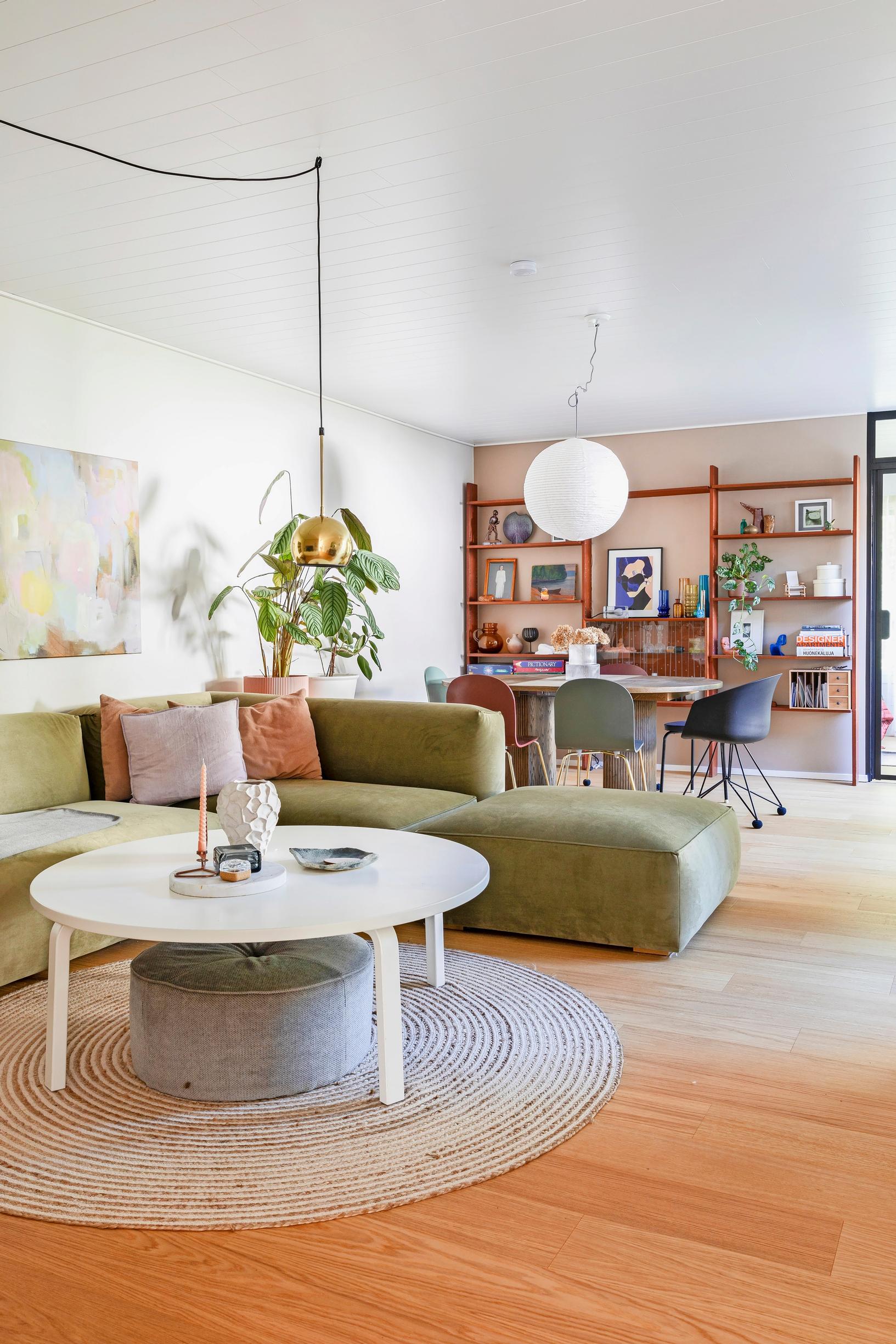
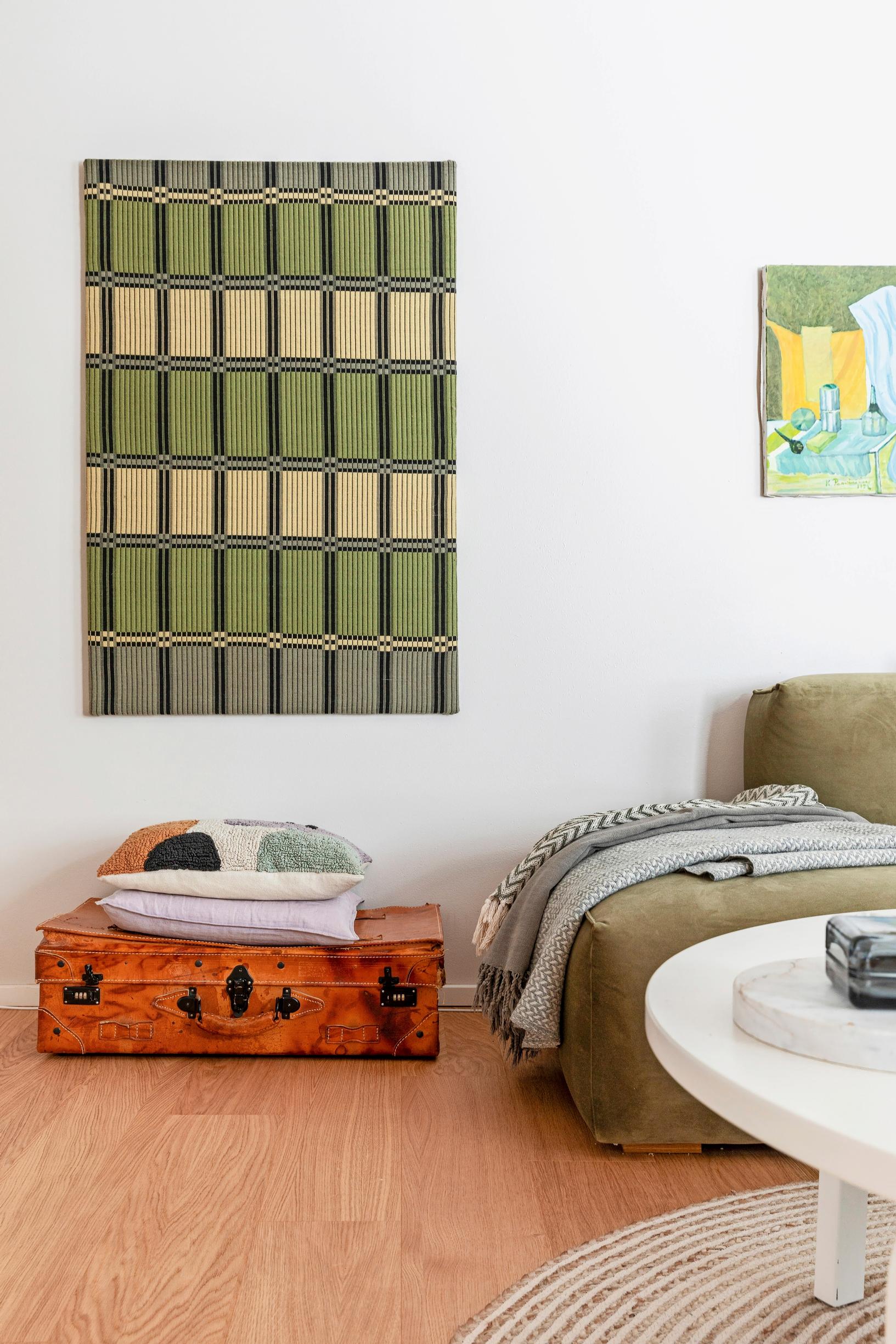
An accessible home doesn’t have to look institutional at all.
Maiju, what made you choose this home?
Our lives changed four years ago when our daughter Viola was diagnosed with a hereditary muscle disease that affects her mobility. Right after we got the news, we began looking for a home suited to our new daily life. When I finally decided to be more flexible about the location, we found this listing. Seeing the photos made me sigh with relief: the single-level apartment looked like it was renovated just for us—and I’ve always loved this era!
What are your key observations about accessible living?
The spaces have been remodeled to feel open, making it easy to move around in a wheelchair. The bathroom is spacious and has a toilet, and even the sink cabinets work for someone with limited mobility. Many 1960s homes are single-level with clear layouts. I looked at doorway widths and how smoothly each space flows into the next. An accessible home doesn’t have to look institutional at all. A beautiful environment is essential for our family’s well-being.
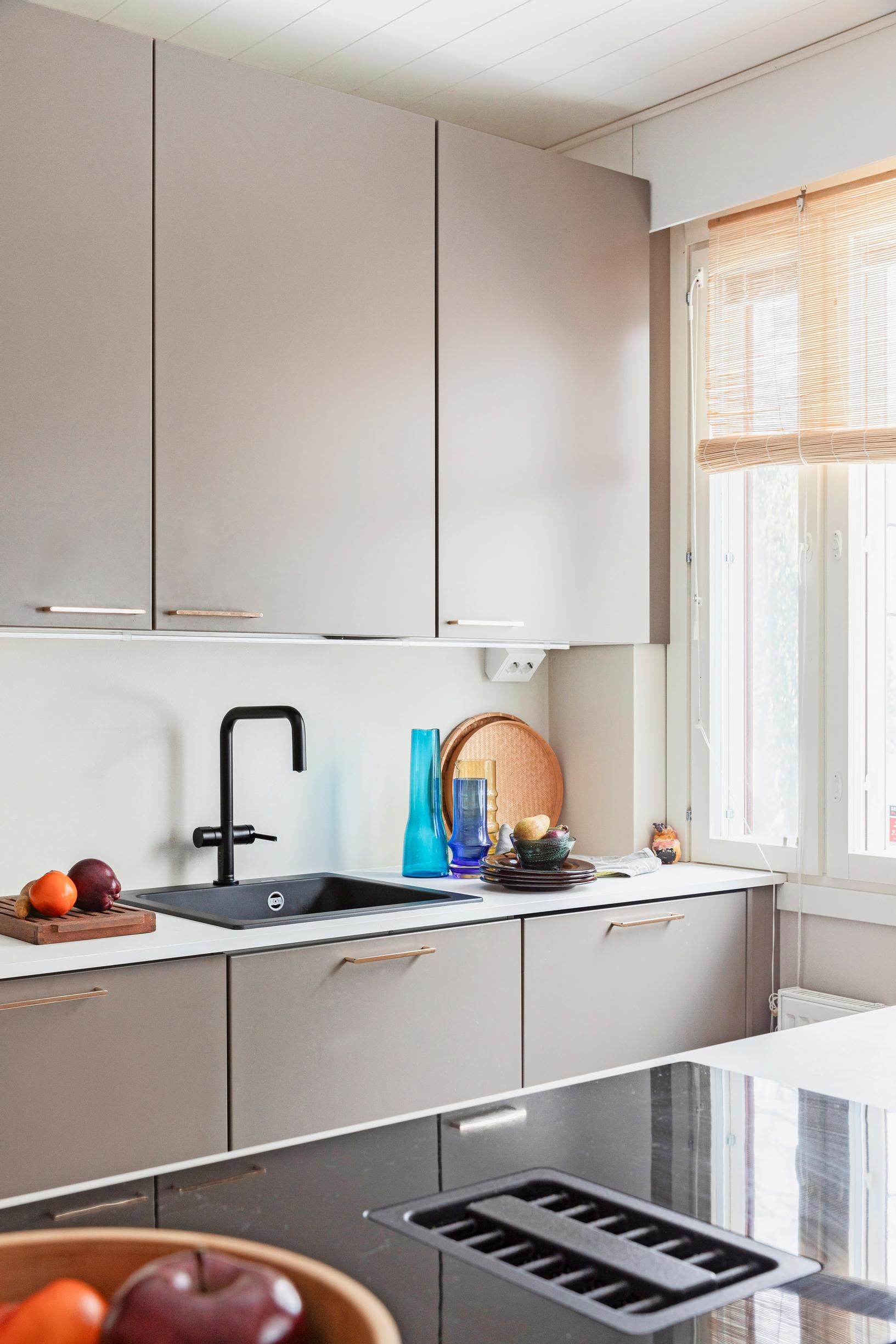
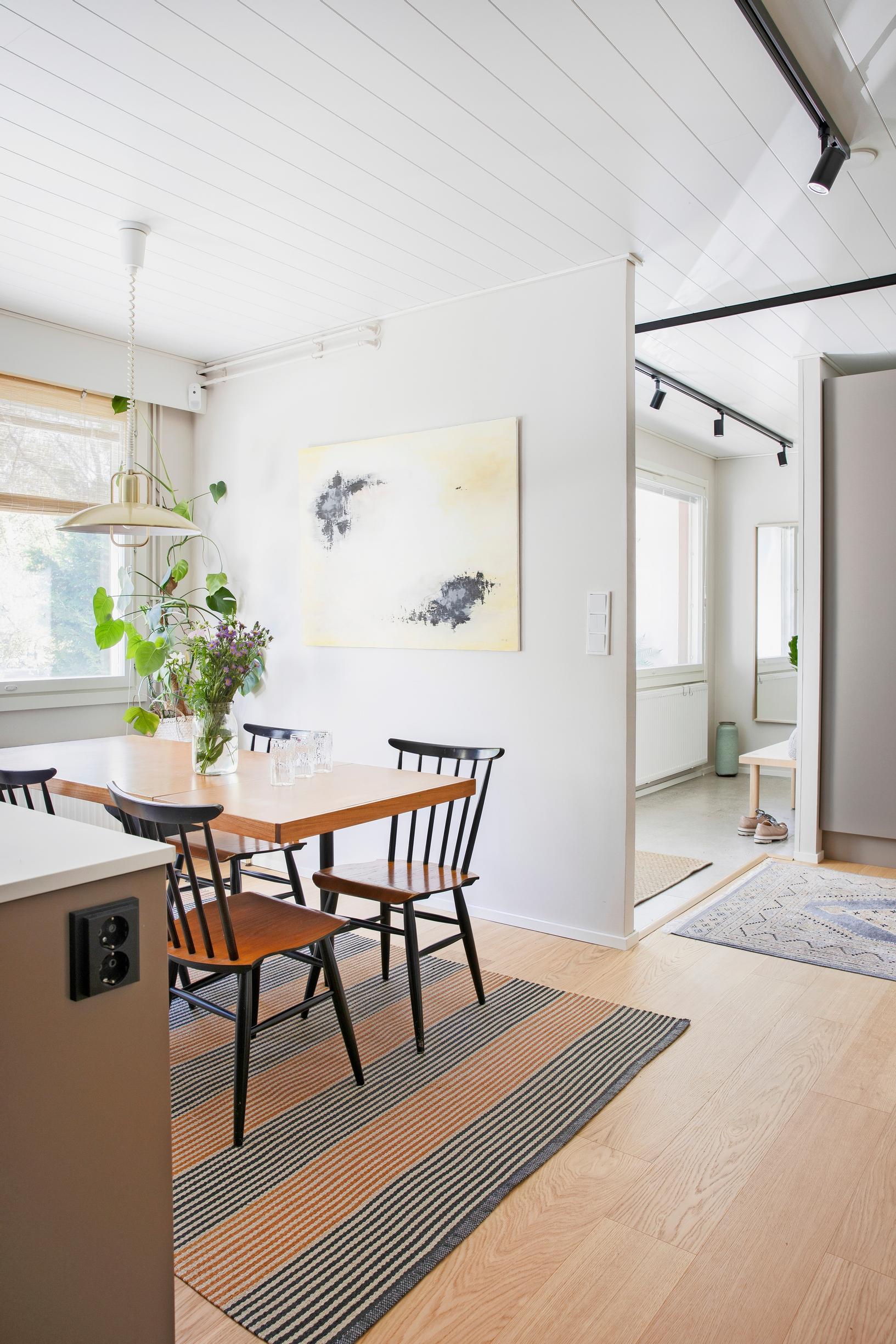
The two most important things in our home are my grandparents’ framed wedding photo and a 100-year-old thick red silk quilt.
Maiju, you’ve created a warm and welcoming home. How did you do it?
The previous owner made smart alterations to the floor plan and chose durable, tasteful materials. It was easy to add my own style for a unified, uncluttered look. I love 1960s architecture and wanted to respect that. One of my best finds is a teak bookshelf I bought on the Tori marketplace. Our home is mostly furnished with secondhand and inherited pieces, and I enjoy exploring thrift stores. The two items dearest to me are my grandparents’ framed wedding photo and a 100-year-old red silk quilt.
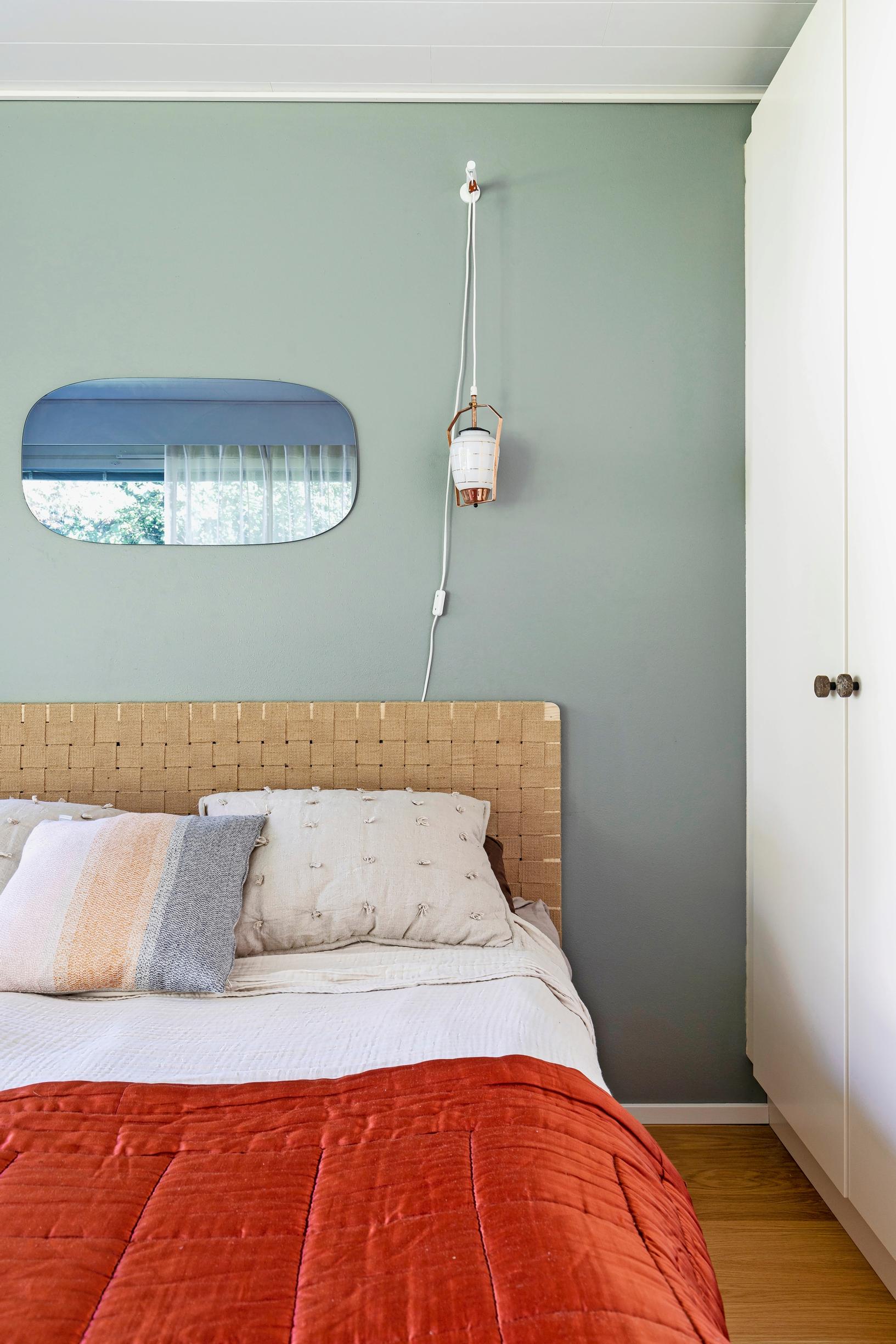
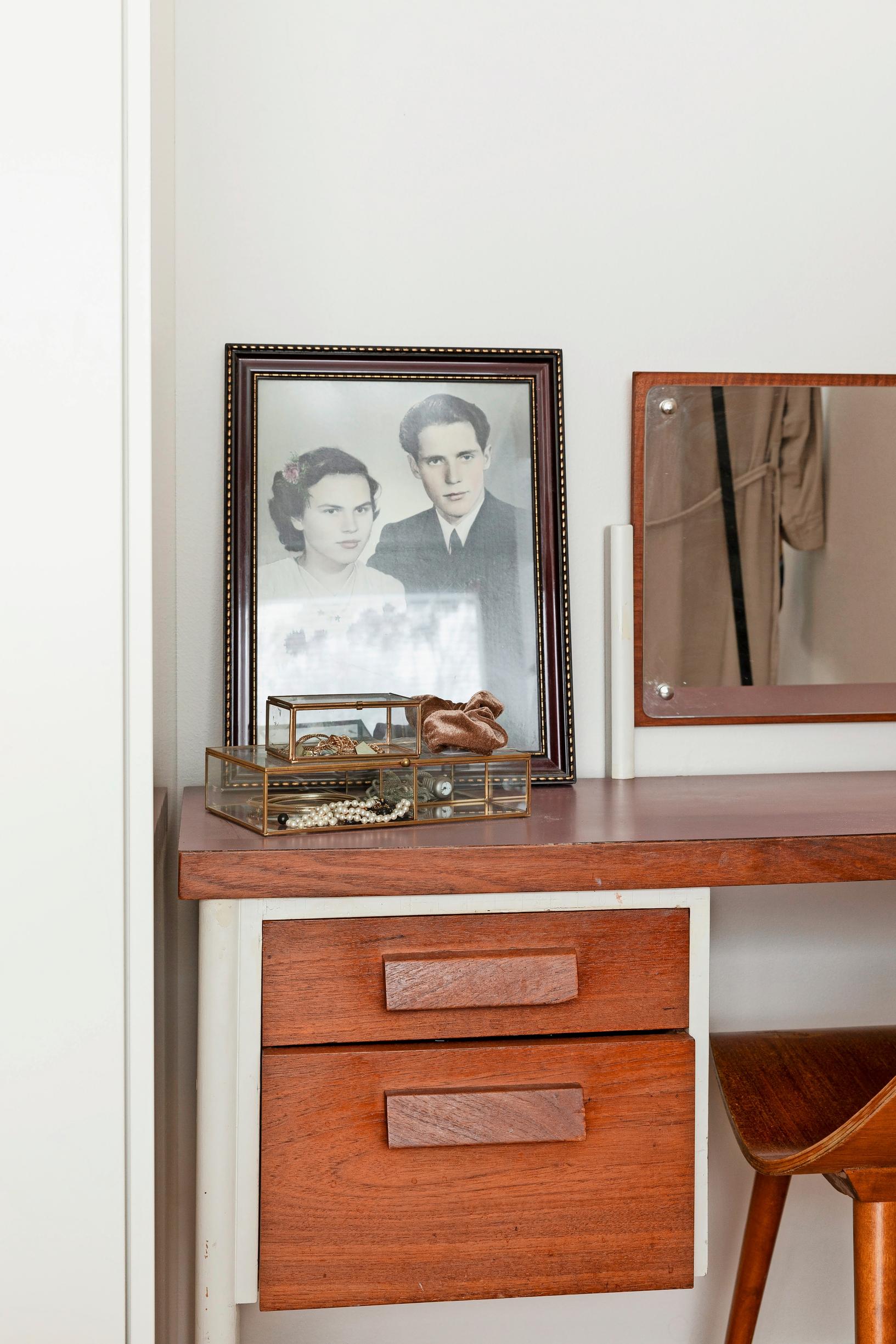
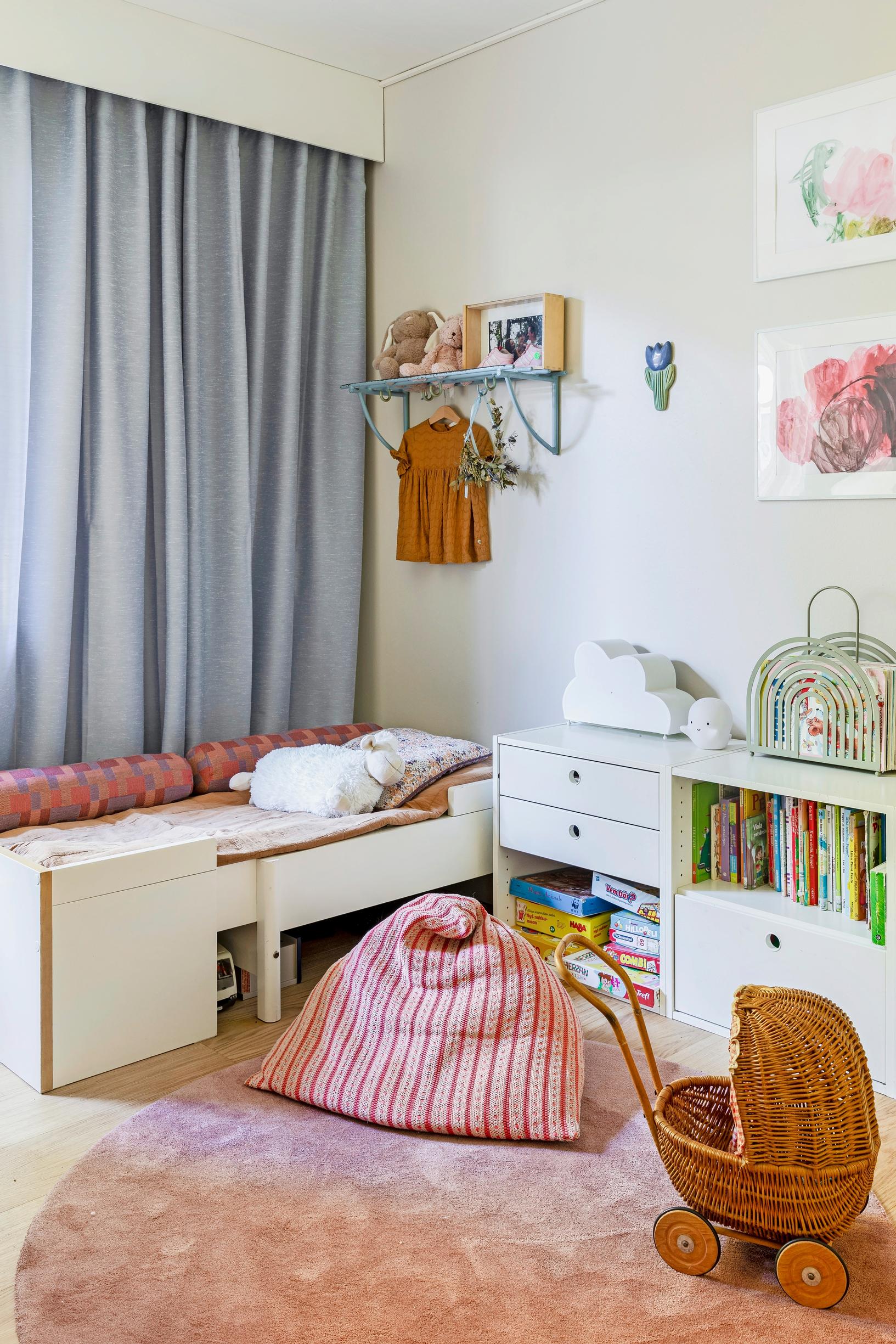
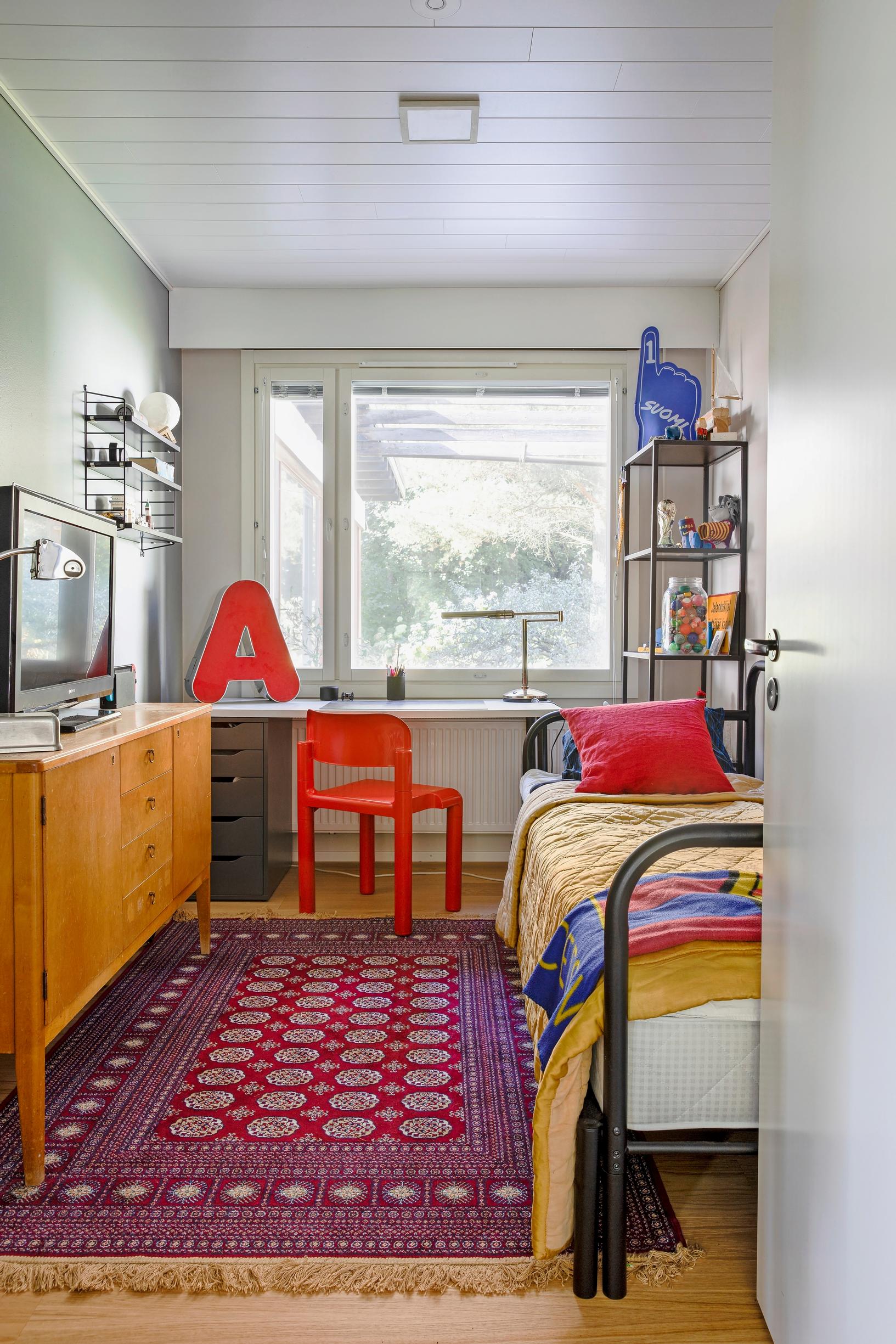
What updates are still on your wish list?
I’d love to expand into the garage at some point, adding a convenient laundry area and a space to wash the wheelchair. There’s also a lot to do in the yard. The atrium courtyard was clearly well planned, but the garden has become overgrown and the deck area needs renovating. I’m also dreaming of a Japanese-style relaxation area.
